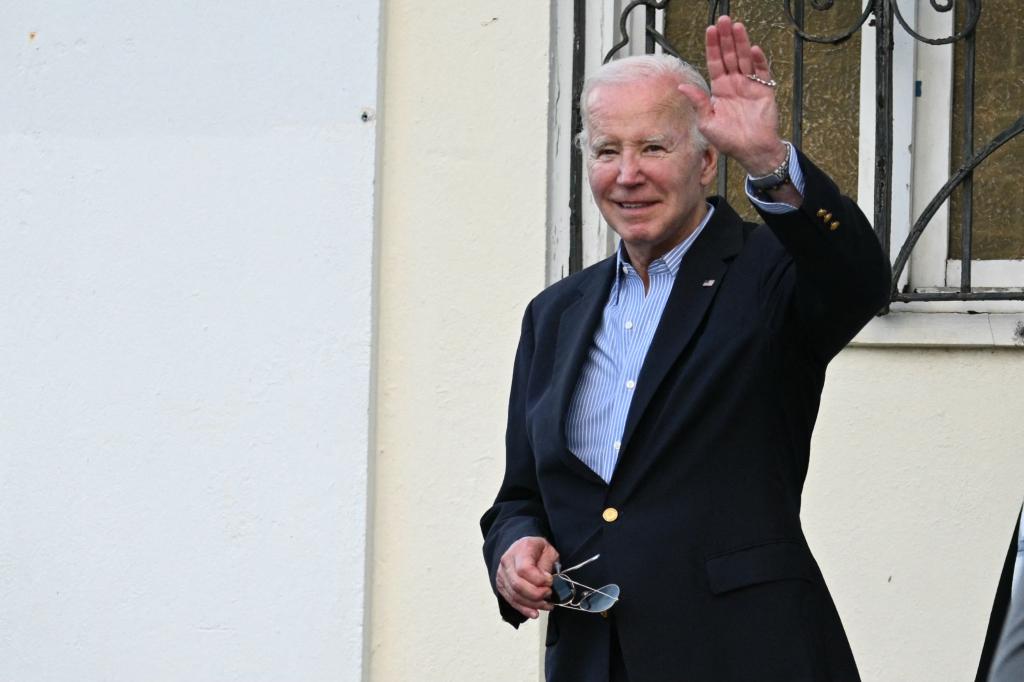Team Biden is making taxpayer-funded projects even more pricey


The Biden administration recently looked at the absurdly high costs of government infrastructure and then promised to raise them further.
On the Friday before Christmas, the government finalized a rule to require large construction contracts to include project labor agreements, or PLAs.
These force contractors to make project-specific deals with labor unions on work conditions, hiring and wages.
The new rule is part of an unprecedented Biden administration effort to push PLAs on almost everything the government touches, from contracts to tax credits.
And it’s going ahead despite abundant evidence that such labor deals raise costs and stymie building.
The new rule will change the nature of federal construction.
From 2009 to Biden’s first year in office, only 12 large federal construction projects required PLAs.
The government now expects anywhere from 60 to 107 projects to require agreements every year.
That means PLAs will be mandated on half to 90% of large projects that together cost taxpayers more than $13 billion a year.
The administration is making similar efforts to require labor deals in an array of programs despite lacking congressional approval.
Although the CHIPS Act did not mention PLAs, the Commerce Department “strongly encourages” them for groups applying for funding.
Though some advocates claim the agreements will facilitate labor peace, a battle between semiconductor giant TSMC and a group of Arizona trade unions over a deal hindered the start of a multibillion-dollar plant.
The Infrastructure Investment and Jobs Act also did not have any provisions pushing PLAs. Yet the Biden administration is encouraging them in grants for new railroad construction, surface transportation, airport terminals and towers and rural broadband.
Biden’s clean-energy drive is also being used to demand unionized labor terms.
The Treasury is pushing companies that take advantage of clean-energy tax incentives to use PLAs.
Leases for offshore commercial wind projects require companies “to make every reasonable effort to enter” a labor agreement.
The administration has even tried to “encourage” state and local governments to have pandemic-recovery projects include PLAs.
Biden’s folks claim the new construction mandate, which carries out an executive order, will not necessarily lead to higher costs and isn’t a “major rule” requiring congressional attention.
The only extra costs it estimates are the time spent negotiating and enforcing the deals.
Yet the best research on PLAs is clear about their impact: A RAND study of a Los Angeles homeless housing program found that the agreements increased costs by over $40,000 per housing unit, or about 15%, on top of existing prevailing-wage requirements.
It also found that hundreds of units did not get built because of the burden of the agreements.
Several studies on school construction have found PLA requirements can increase costs by up to 30% per square foot.
Biden’s PLA policy is by far the most aggressive in history.
After Presidents George H.W. Bush and George W. Bush both issued orders banning PLA mandates, Presidents Bill Clinton and Barack Obama both issued orders allowing them.
But the Democrats’ orders were permissive and loose: Obama’s 2009 rule only said it wanted to “encourage executive agencies to consider” agreements.
President Donald Trump didn’t bother issuing a countervailing one during his time in office.
The recent Biden rule, by contrast, notes the change “from discretionary to mandatory” PLAs.
It estimates thousands of contractors and subcontractors could be required to enter labor deals in order to compete on and win federal contracts.
The new agreements will be in addition to existing federal prevailing wage and other labor requirements on government contracts.
Amid unprecedented spending on infrastructure, it behooves the government to get the best bang-for-its-buck.
Instead, Biden is mandating that people working in construction sign wasteful deals and pay off union middlemen.
It’s a recipe for disaster, finished right on the eve of Christmas.
Judge Glock is director of research at the Manhattan Institute and author of “The Dead Pledge: The Origins of the Mortgage Market and Federal Bailouts, 1913-1939.”







